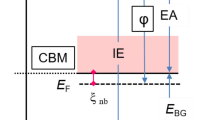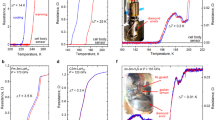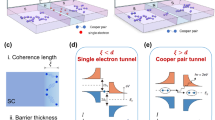Abstract
Transistor doping of potential superconductors promises to illuminate inherent levels and limits for the materials in question. Here some of these limits are quantitatively predicted on a charge order or “radical” model for a variety of experiments. This model is based on a universal T c scaling with anionic radical concentration. It is applicable to systems with covalently bonded, high electronegativity components. For the cuprates its general features are a linear increase of T c with holes, which are normalized per total hole carrying species (e.g., O− radical density). This dependence proceeds up to optima, corresponding to a uniform alternate hole charge order limit and T c decreases thereafter with various slopes. The optima are quantitatively calibrated through the deleterious influence of the Blocking layer as measured by its O content. Amongst the predictions is a general limit of T c max ∼ 167 K for oxide superconductors, obtainable in infinite layer type compounds (CaCuO2). Other predictions are optimal T c ∼ 83 K for La2CuO4 and maximum values potentially near 500 K for borides or carbides.
Similar content being viewed by others
REFERENCES
J. H. Schoen, C. Cloc, and B. Batlogg, Nature 408, 549 (2000).
J. H. Schoen, C. Cloc, and B. Batlogg, Nature 406, 702 (2000).
C. Park and R. L. Snyder, J. Am. Ceram. Soc. 78, 3171 (1995).
B. Raveau, Crystal Chemistry of High Tc Superconducting Oxides (Springer, Berlin, 1991).
H. Oesterreicher, J. Solid State Chem. 158, 139 (2001).
H. Oesterreicher, J. Alloys Compd. 299, 264 (2000).
H. Oesterreicher and J. O'Brien, J. Alloys Compd. 306, 96 (2000).
D. Ko and H. Oesterreicher, Physica C 277, 95 (1997).
H. Oesterreicher, J. Alloys Compd. 299, 264 (2000).
H. Oesterreicher, J. Low Temp. Phys. 177, 993 (1999).
M. R. Presland and J. L. Tallon, Physica C 176, 95 (1991).
A. Simon, Angew. Chem., Int. Ed. 36, 1788 (1997).
T. Mizokawa, A. Fujimori, and H. Namatame, Phys. Rev. 49, 7193 (1994).
H. Oesterreicher, J. Alloys Compd. 299, 264 (2000).
Y. Petrov and T. Egami, Phys. Rev. B 58, 9485 (1998).
Z. Zou and J. Ye, Phys. Rev. Lett. 80, 1074 (1998).
R. Sercice, Science 291, 1476 (2001).
Author information
Authors and Affiliations
Rights and permissions
About this article
Cite this article
Oesterreicher, H. Transistor Doping-Predictions for Superconductivity in the Charge Order Model. Journal of Superconductivity 14, 705–711 (2001). https://doi.org/10.1023/A:1013299827143
Issue Date:
DOI: https://doi.org/10.1023/A:1013299827143




